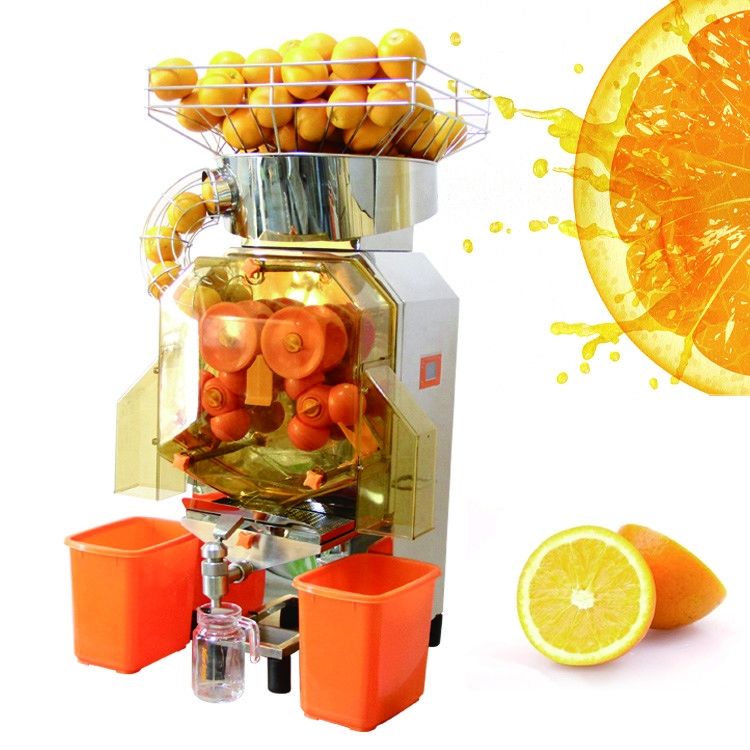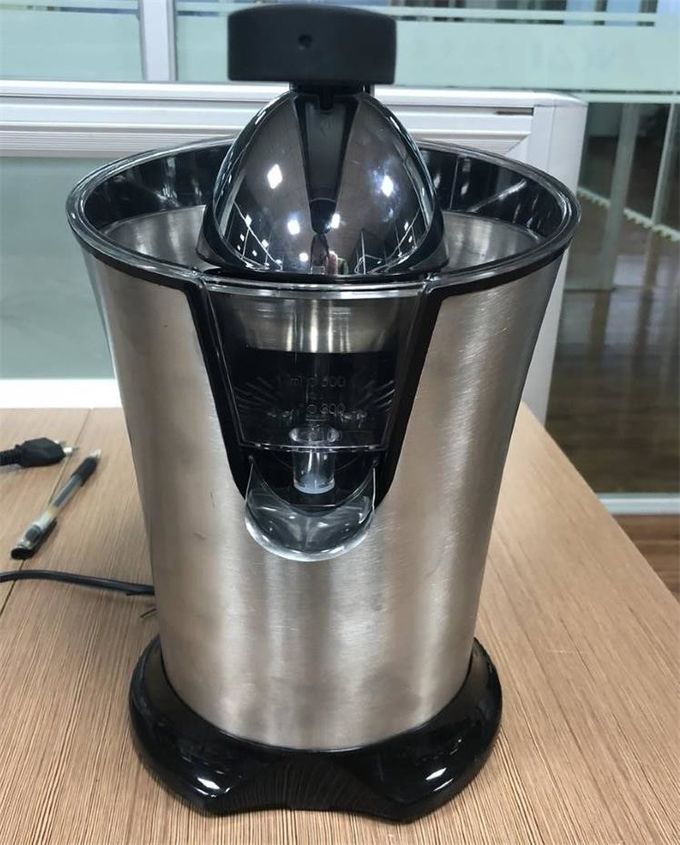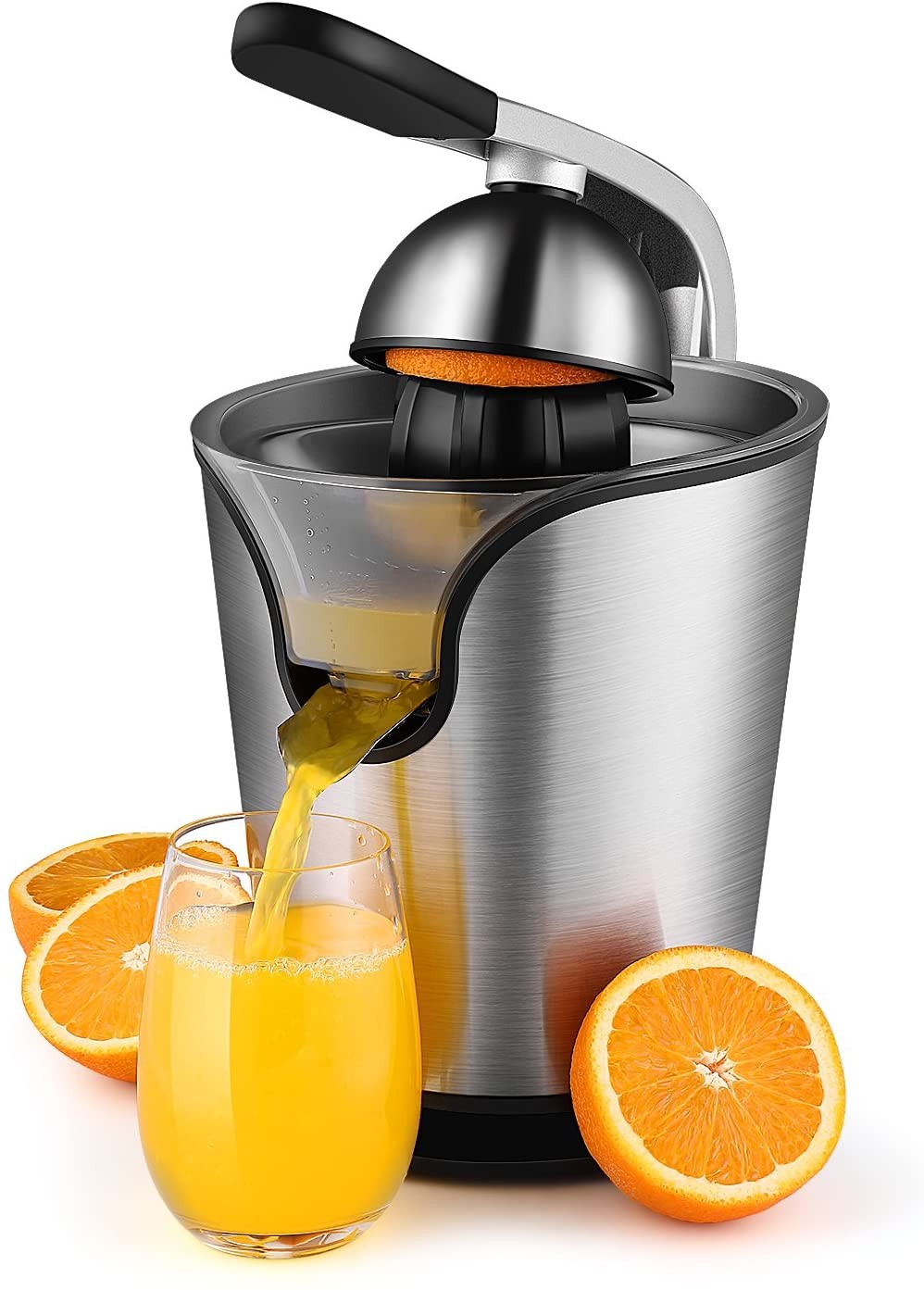
#Orange squeezer machine manual#
We’ve included a selection of manual juicers that forego the traditional reamer (that’s the cone onto which you’d squish the fruit) and opt instead for sturdy steampunk-look stand presses, or even handheld models that can be stowed in the drawer. If you’re planning on reserving your juicing for the weekend, or time’s not an issue, a manual orange juicer may cut it. You also might want to consider the capacity of the motor to handle large orders – that is, will it start to run out of steam or give out a suspicious burning smell after a few minutes of constant operation? When looking for an electric juicer, consider the capacity of the inner reservoir, if it has one, and whether it corresponds with the amount of juice you’ll be needing to press in one go. The lower level of exertion they require also makes them better for juicing enthusiasts with mobility issues or arthritis, as some manual juicers require you to really put your back into it. It’s a given that electric juicers are more expensive thanks to all that complex circuitry, but if you usually find yourself in a rush, the convenience they offer can transcend the initial annoyance of spending more. I’ve also re-flowed all the solder joints.Depending on how much elbow grease you’re happy to spend on your morning juice, you can choose between two different types of juicer: manual or electric. I’ve cleaned out all the channels between the strips and cleaned the board with a tooth brush and alcohol. C1 (.047U) won’t allow anything to pass, so it’s hard to say whether it’s a problem with the input or the cap…if I had to suspect one I guess it would have to be the cap, but as I said I replaced that with the same result. But as you can see I’m grabbing at straws here.

Looking at the diagram the only way I see it going to the IC is input to R2 jumping to the “L” strip, going to L12 and jumped up under the IC. The testing is done on a test rig I built that is an enclosure with the off board wiring all done…I used star grounding. Any ideas? I’m no expert at troubleshooting or any of this obviously, but I would expect to hear something with the audio probe at input I think. At points beyond this I did get sound but no effect. I then started checking with my audio probe and discovered I got nothing at the input even after replacing the input wire and C1. I tried to build this and it didn’t work.

Within the useful range, it seems like you get more distortion as you increase the pot, and more attack as you decrease it. A well-chosen resistor could replace the trimmer, but the value will depend on your trannies. A wide variety of automatic orange squeezer machine options are available to you, such as processing, condition, and local service location. It’s probably better to use an internal 10k trimmer (to roughly set the bias) and an external 1k or 2k pot (to set the sustain), but it was already boxed up and I didn’t see an obvious place to put the trimmer. offers 7,639 automatic orange squeezer machine products.

I isolated this band by adding an arrangement of resistors to the pot lugs so that the useful range (which is less than 5% of the original sweep) now spreads over the whole sweep. Fresh Orange Juice Squeezer Machine, Hand Press Manual Fruit Juicer Reference FOB Price / Purchase Qty. Useful settings are somewhere inside this band.

Sorry for the confusion.īTW, according to what I read, you should find the narrow range on the sustain pot where the volume increases dramatically. It should be silent at 0 and get louder as you increase the knob.
#Orange squeezer machine how to#
After I built it, I read up on how to set the sustain and found that your wiring is correct and I had reversed it. I assumed that the sustain knob controls compression so it should get quieter as you increase the knob.


 0 kommentar(er)
0 kommentar(er)
